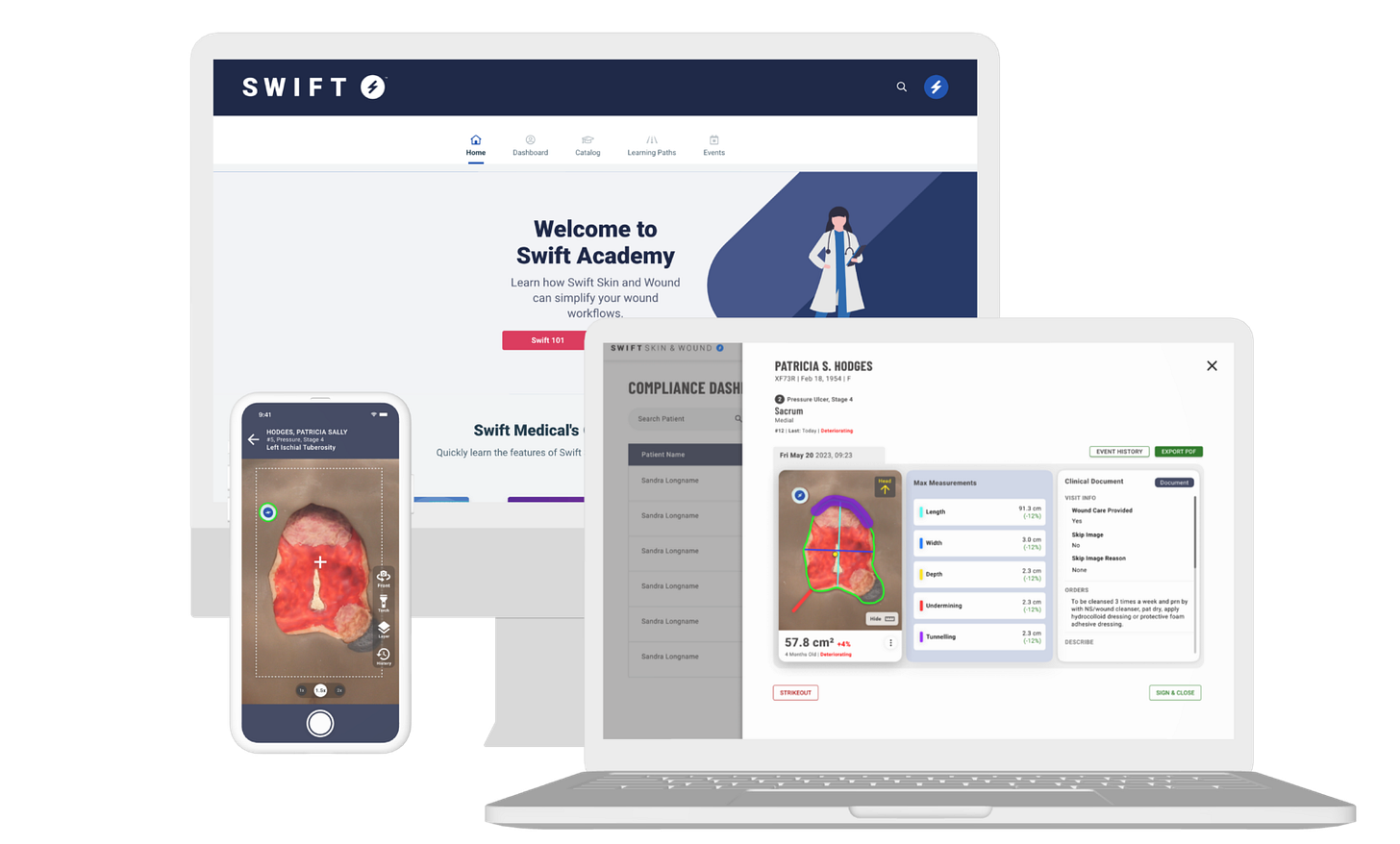Data, Docs, and Digital Records: The EMR and EHR Landscape in Canadian Healthcare
How Leading Companies Like TELUS Health, WELL Health, and Ava Industries Are Shaping the Future of EMRs and EHRs
Understanding EMRs and EHRs in Context
Electronic Medical Records (EMRs) vs. Electronic Health Records (EHRs):
While EMRs and EHRs are critical digital tools for healthcare management, their distinctions are essential for understanding their impact. EMRs serve as digital versions of patient charts, streamlining workflows within a single provider's office. However, their lack of interoperability limits information-sharing beyond individual clinics.
In contrast, EHRs offer a panoramic view of a patient’s medical history, designed for accessibility across multiple healthcare settings. This allows for seamless collaboration between specialists, reducing redundant tests and improving care coordination.
The push for interoperability is driving healthcare’s digital transformation, ensuring that patient information flows securely and efficiently across providers and systems.
Canada’s Progress in EMR Adoption: Challenges and Opportunities
Over 87% of Canadian primary care physicians now rely on EMRs—an achievement propelled by government funding and technological advancements. Yet, adoption remains uneven, with smaller clinics often trapped on outdated systems that hinder efficiency.
Key barriers include:
Cost of upgrades and maintenance for modern systems.
Data migration challenges from legacy systems.
Training and user adoption gaps, especially in rural areas.
These hurdles create a fragmented system, where advanced platforms like Epic, Cerner, and MEDITECH dominate hospitals, while smaller clinics lag behind.
Government’s Role in Bridging the Gap
Federal and provincial governments have provided financial incentives and guidelines to encourage EMR adoption. Efforts are now shifting toward ensuring equitable access to modern systems across rural and urban regions, emphasizing the need for scalable, interoperable solutions.
Connecting the Dots: EMRs and the Evolution of Canadian Healthcare
In today’s increasingly digital world, the way healthcare providers manage patient information can make or break the quality of care delivered. At the heart of this transformation lies the Electronic Medical Record (EMR)—a system that replaces cumbersome paper files with streamlined, digitized records.
Key Players Driving EMR Innovation
The Canadian EMR market is led by established players and emerging innovators alike:
1. Telus Health
Telus Health serves over 40,000 physicians, offering solutions like CHR and PS Suite, tailored for clinical workflows and patient management.
2. WELL Health
With EMR systems like Oscar Pro and Intra Health, WELL Health empowers physicians with integration tools, analytics, and telemedicine solutions through Apps.health.
3. QHR Technologies
QHR’s Accuro EMR supports 20,000 clinicians, delivering customizable solutions to meet specialty-specific needs.
Ava Industries: Simplifying EMR Integration
Ava Industries is emerging as a key player in Canada’s digital healthcare landscape. Ava focuses on developing scalable EMR and health tech solutions that prioritize efficiency, affordability, and accessibility. Their innovative approach targets the small-to-medium healthcare providers often left behind by larger systems, ensuring seamless workflows and enhanced user experiences.
By bridging the gap between legacy systems and next-gen technology, Ava Industries is helping clinics overcome cost barriers and streamline patient care. Their platform reflects the increasing demand for customizable, user-centric EMR tools tailored to diverse healthcare needs.
We had the chance to attend a talk with Dr. Michael Forseth and we wrote about Ava Industries in the article below
Event Recap: Physician-Entrepreneurs Transforming Canadian Health Tech
Last week, we attended an insightful event where physician-entrepreneurs shared their journeys in building companies that address critical pain points in Canadian healthcare. A recurring theme was how these doctors-turned-entrepreneurs identified specific gaps in the system based on their clinical experience and created tech solutions to bridge them.
EHR Adoption in Canadian Hospitals: Addressing the Cost Barrier
EHR adoption in Canadian hospitals is uneven compared to the United States. While MEDITECH leads the Canadian market with a 29.7% share, platforms like Epic and Oracle Cerner are growing.
However, approximately 100 hospitals still lack an inpatient EHR system—a challenge attributed to high implementation costs, infrastructure demands, and operational disruptions.
In comparison, the U.S. healthcare system, dominated by Epic (38% market share), has benefited from significant investment and federal mandates for EHR implementation.
Canada must prioritize cost-effective adoption strategies to close this gap, ensuring hospitals—big or small—can modernize their patient care delivery.
Health Tech Innovations: Beyond EMRs and EHRs
As Canada’s digital transformation accelerates, emerging technologies are reshaping healthcare delivery:
1. RexEMR
Leveraging AI-driven automation, RexEMR reduces administrative burdens and enhances patient care. Their rapid 24-hour data migration capability addresses a common barrier for clinics transitioning to new systems.
2. Swift Medical
Focusing on wound care, Swift Medical’s platform uses AI-powered analytics to improve clinical accuracy and healing outcomes. By enhancing collaboration between care teams, Swift Medical is transforming specialized care delivery.
3. Ava Industries
Ava Industries’ customizable EMR solutions reflect a patient-centered approach, focusing on ease of use and interoperability. Their innovative tools empower smaller clinics to harness the same efficiencies seen in larger healthcare organizations.
What Lies Ahead for Canadian Healthcare?
The adoption of EMRs and EHRs has laid a strong foundation for Canada’s healthcare future. However, critical challenges remain:
Interoperability gaps between EMRs and EHRs.
High costs of upgrading legacy systems.
Ensuring access to cutting-edge tools for smaller providers.
Innovative players like Ava Industries, RexEMR, and Swift Medical demonstrate how tailored, next-generation solutions can bridge these gaps. By prioritizing affordability, user-friendliness, and AI integration, Canada is poised to achieve a truly connected, patient-first healthcare system.
As investments in digital health continue, Canada has the opportunity to lead a global healthcare revolution, transforming patient care through technology.
Read Our First Article & Share Your Ideas
If you missed it, be sure to check out our first article here, where we covered key reasons why we started our Canadian Health Tech newsletter.
We’d also love to hear from you! What topics would you like us to explore next? Reply to this email or leave a comment with your suggestions – we’re always looking to provide valuable insights based on what matters to you.
We’ll continue to keep you informed about the latest developments and their impact on healthcare and tech in Canada. Stay tuned for more updates, and feel free to share your thoughts or questions with us!










Excellent read! Managing digital records and health data effectively requires careful attention to emr data migration. Ensuring smooth, secure, and accurate transfers between systems is key to maintaining data integrity and compliance. For more insights on best practices, check out this resource: https://www.cleveroad.com/blog/ehr-data-migration/